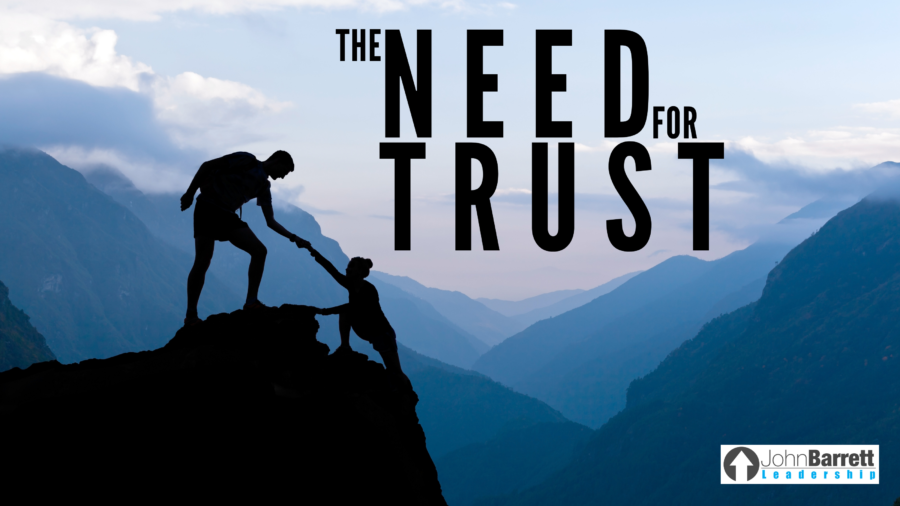The Need For Trust
We have all heard that trust is the foundation of leadership and would most likely all agree on that statement as well. However, as I have coached many leaders, I have come to find a hidden crack in this foundation. I have worked with several companies that bring me in to coach multiple people within their ranks. It is incredibly interesting to have one-on-one conversations with managers and then their direct reports. I get to play the middle-man and hear a unique perspective as they open up about their view of each other. It is not uncommon to quickly realize a disconnect between what is perceived and what is actually happening. Most leaders overestimate how much trust they truly have from their team. They tend to be overly optimistic about the amount of faith people have in their leadership. This oversight often creates the hidden cracks in the foundation of their influence, as I mentioned earlier.
Like a crack in your house’s foundation can eventually cause major problems as you build up, so our leadership foundation can limit our leadership if not solidified correctly. If the foundation is weak, the upper levels will not be adequate and stable. You’ll never be able to influence others to greatness if there is no trust to hold it all together. And trust me, I see many leaders trying to lead blindly, thinking the foundation of trust is intact, when in fact, it isn’t. In a recent study, Tolero Solutions found that 45% percent of people said lack of trust in leadership was the biggest issue impacting their work performance. Statistically speaking, this data shows that nearly half of your team feels a lack of trust is effecting their ability to move forward.
In Stephen M.R. Covey’s book, The Speed of Trust, he wrote this, “The first job of a leader—at work or at home—is to inspire trust. It’s to bring out the best in people by entrusting them with meaningful stewardships, and to create an environment in which high-trust interaction inspires creativity and possibility.”
We must do three things to ensure our leadership is resting on the foundation of trust; build it, barricade it, and become it. Let’s break them down.
1) Build It
Trust is built, not bestowed. Meaning, you don’t just get trust handed to you; it is forged through blood, sweat, and tears. You can only build trust layer by layer, brick by brick. It is a process that takes extreme patience. You can’t rush trust. Like you can’t expect to lose 10 pounds overnight with a crash-diet, you can’t expect to gain trust overnight through a crash-course. Trust has to have time to solidify and settle. This is why new leaders in an organization can wreck their influence if they try to move too quickly without trust from the team. If you move too fast without it, you can damage relationships and future possibilities. Trust rises to new levels every time what you say and what you do align. Conversely, trust erodes when there disconnect between what you say and what you do. When there is a gap between people’s expectation and their experience, they fill it with distrust. This leads us to the next point…
2) Barricade It
Trust is a fluid and fragile thing. It is ever-living and can be broken at any moment. All it takes is one wrong decision to come crashing into what you’ve built, and the whole thing is jeopardized. Trust is not fair; you can spend a lifetime building it and lose it in one false move. However, you can reinforce what you’ve built with honesty and humility. The more you reinforce trust and surround it with being real, the better chance you have of withstanding the powerful forces of distrust. The stronger the barricade becomes, the more hits you can take. Real leadership is authentic and respected. But fake leadership can be sensed a mile away. And fake leadership breaks down your influence. You have to understand that trust barricading is an everyday action that you must be intentional about. It is an ongoing work that never ends.
3) Become It
You cannot build trust without being a trustworthy person. You have to model the behavior you desire to see, or as I often say, you have to be it if you want to see it. The most effective form of leadership is to exemplify the expectations you have in others. A team always migrates towards the behavior of the leader. The more trusting you are, the more trusting your team will be. Coach Mike Krzyzewski said, “If you set up an atmosphere of communication and trust, it becomes a tradition. Older team members will establish your credibility with newer ones. Even if they don’t like everything about you, they’ll still say, ‘He’s trustworthy, committed to us as a team.'” Always remember this truth about trust; you can’t get it if you don’t give it.
If you want to lead at the highest level, you have to start with the lowest level; and the lowest level is the foundation of trust. Every day you have to invest in building trust, barricading trust, and becoming a trustworthy person. The good news is, the more trust you have, the better you can lead, and the better you can lead, the more impact you’ll have.









